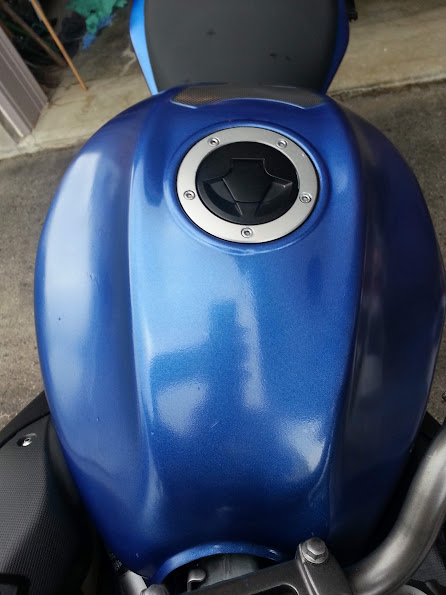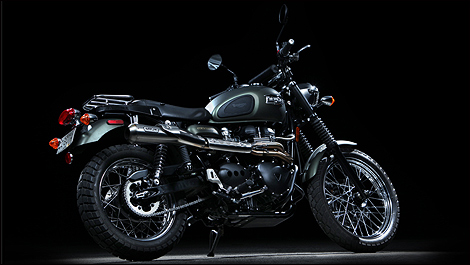| A three legged Tiger. |
Changing fork oil turned out to be pretty straightforward. The most time consuming part is removing any niggly body panels so you can get at the forks themselves. Make sure you loosen the top fork plug before you remove the forks as you need the forks firmly held while you do that and the clamps on the bike are designed to do just that. Once you’re there, undoing the clamps that hold the forks means they’ll slide right out, so be ready for that.
| The spring on the Tiger is a progressive rate unit – it is sprung tighter the lower it goes. |
Once on the work bench it was a matter of taking off the rubber fork protectors and cleaning up the unit. I then slowly removed the top of the fork using a 22mm ratchet while keeping pressure on. The book said the cap is under ‘considerable’ pressure from the spring, but with the fork fully extended it released quite gently. With the cap off I removed a spacer, a washer and the spring slowly as the fork is full of oil. Pulling the spring out quickly means you’re pulling oil out and making a mess. With the parts out I inverted the shock assembly and poured the old oil out into a measured container to see how much was in there and what condition is was in.
The oil came out looking pretty dark – the new stuff was completely transparent. Since the previous owner didn’t appear to change the oil in the engine, I doubt fork oil ever got looked at; this stuff has probably been in there a while. There was no corrosion in or on the forks themselves or on the internal components, so after a cleanup I poured 710ml of new fork oil into the fully compressed fork. I had to raise the fork to install the spring, washer and spacer and then put the cap back on snug. I later tightened it to torque specs when it was reinstalled on the bike.
If you’ve got a bike with fairings I’d guess a fork oil change would take you an easy afternoon of work. If you’ve got a naked bike then this is a matter of removing the front wheel and brake calipers, loosening the top cap, loosening two clamp bolts on the triple tree and handlebar clamps and sliding the fork out. Removing the cap and internal components and emptying the old oil would only take about ten minutes per fork. Refilling a compressed, empty fork with the required amount of fork oil and putting it all back together another ten minutes. Once you were familiar with the process on your naked bike it wouldn’t take more than an hour to do a fork oil change – longer if you have a lot of finicky fairings to remove.
The left photo is of the fork assembly off the bike prior to removing the rubber fork gaiter (which cleaned up nicely with warm soap water and then some Armourall). On the right: all back together again. The front wheel got regreased and cleaned up. The speedo housing was especially mucky.
LINK to the specs research I did on fork oil changes on this particular Triumph Tiger.
| The other fork had about 650ml in it – pretty black considering it was clear when it went in. |
from Blogger http://ift.tt/2jNmaae
via IFTTT





















